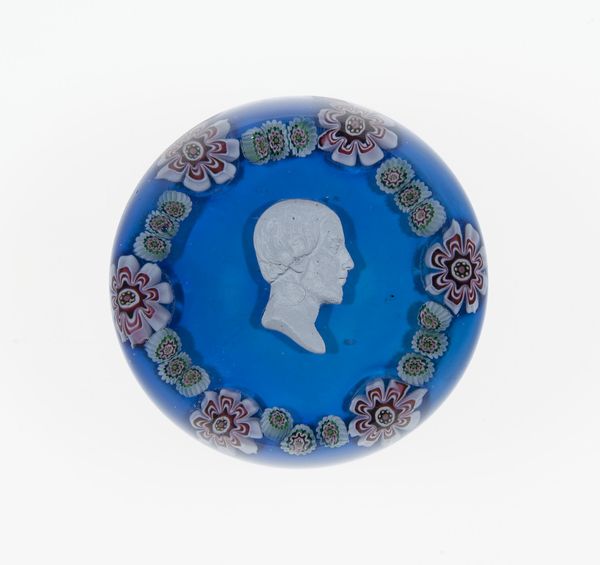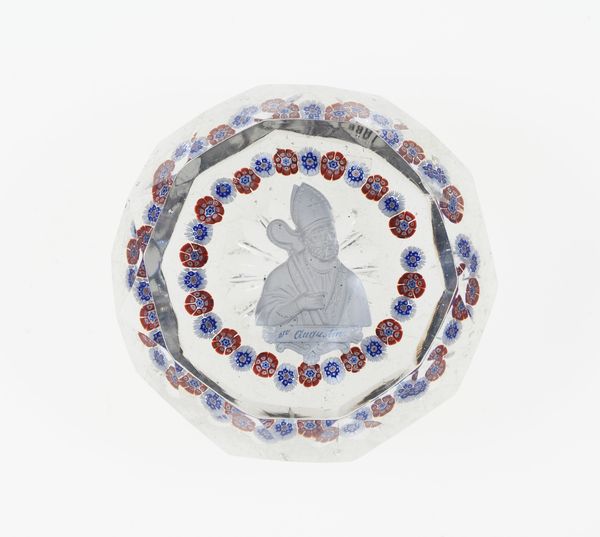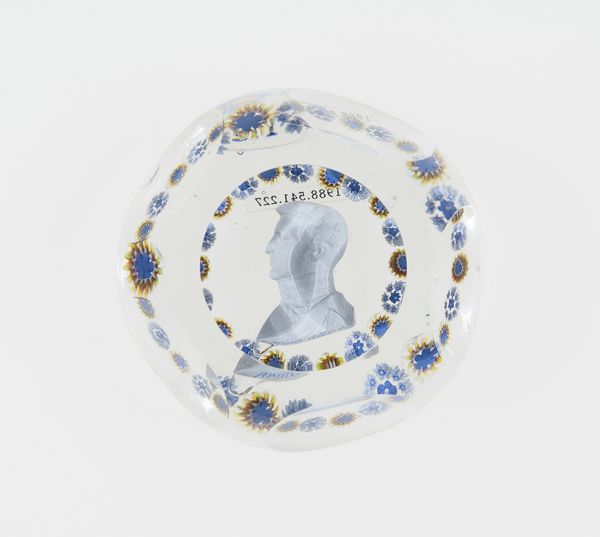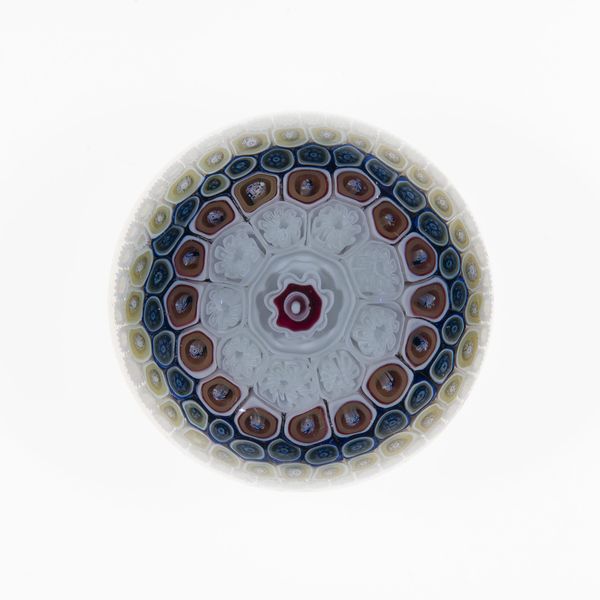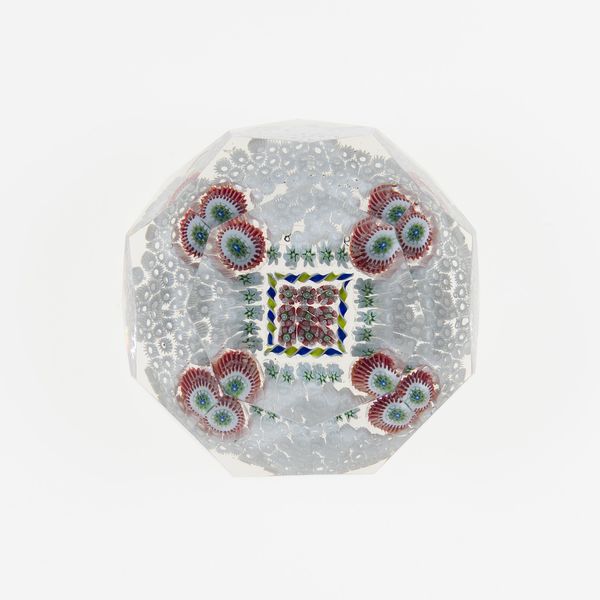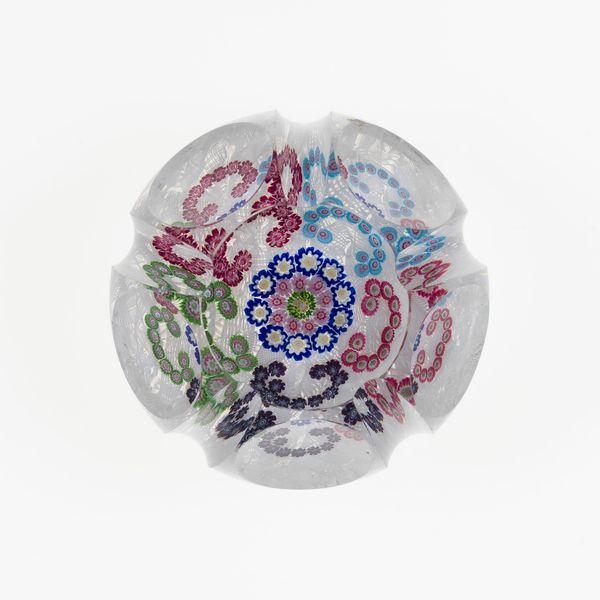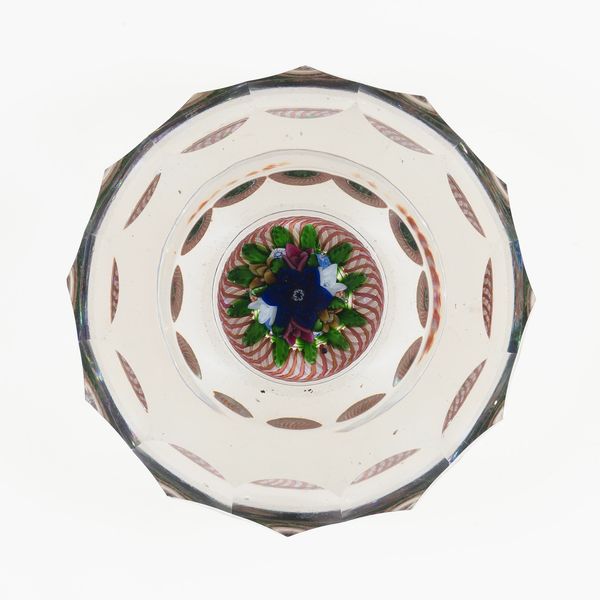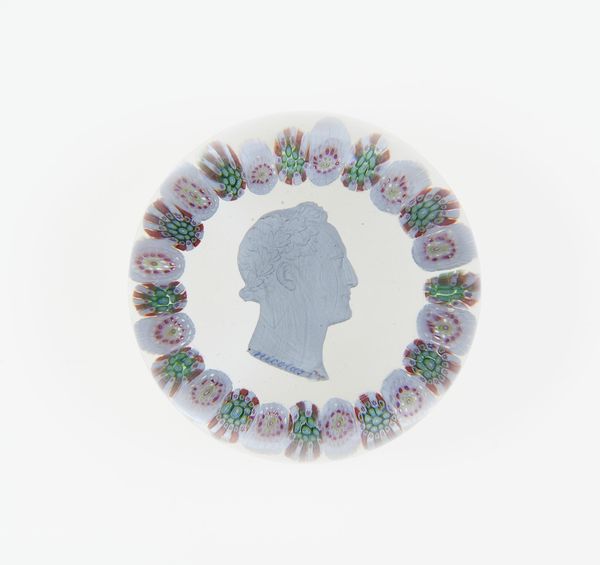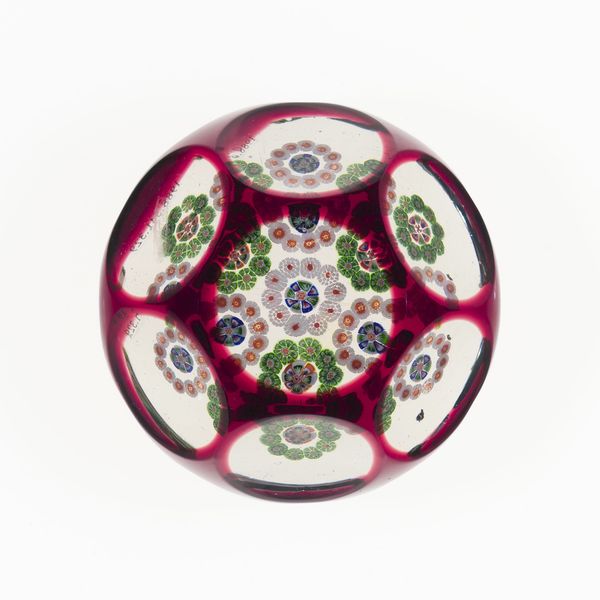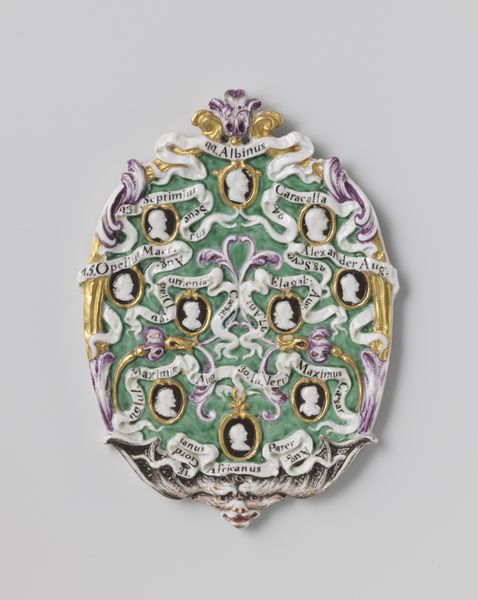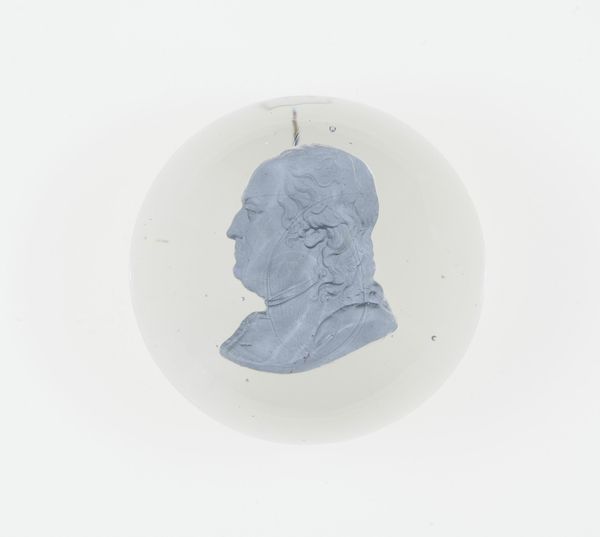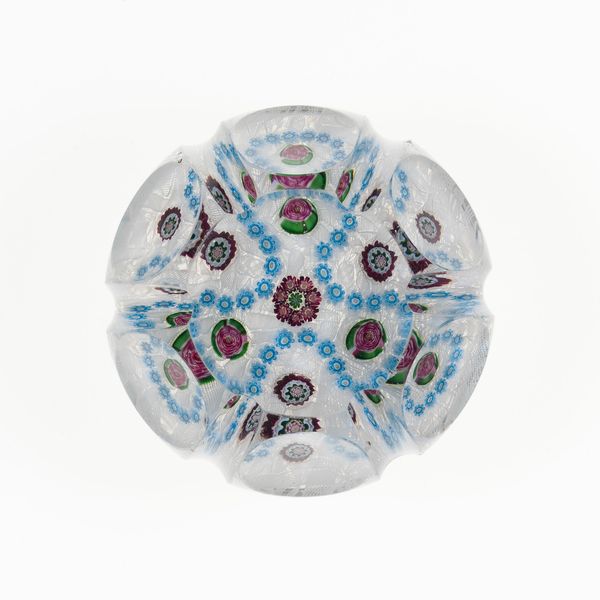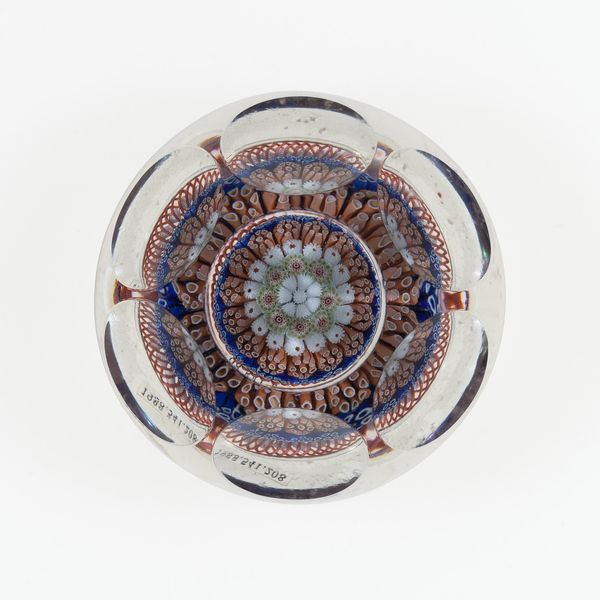
Dimensions: Diam. 5.7 cm (2 1/4 in.)
Copyright: Public Domain
Curator: The “Paperweight,” circa 1846, crafted by Baccarat Glassworks. It’s made of glass. The piece feels very formal to me with that central portrait. How do you read it? Editor: The way the portrait is captured within layers of glass and those delicate floral designs makes it intriguing. What visual elements stand out to you in this piece? Curator: Certainly. Note the controlled symmetry, both in the placement of the portrait and the concentric rings of millefiori. Consider how the internal structure creates depth, literally encasing the portrait within the glass matrix. Are you finding that the object's material and formal characteristics are relating to the era of its production? Editor: Yes, the controlled symmetry and the encased portrait speaks to a certain formality, the glass seems incredibly refined. Are there perhaps underlying meanings from the glass material, portrait or other structural properties? Curator: Indeed. Glass, in its clarity and refractive properties, serves here as both medium and metaphor, encasing a figure. But further, we might note the tension between the precision of the portrait and the perhaps haphazard distribution of colours around it, perhaps telling of larger shifts during its creation period. Does this new element give way to more analysis about the portrait at hand? Editor: Absolutely, focusing on the tension elevates the work by providing a strong contrast to it. I had not picked up on that contrast initially, it gives a starting point for thinking about the artist. Thank you for clarifying! Curator: It is a pleasure to consider the material properties of works, in tandem with elements that are formal in nature.
Comments
No comments
Be the first to comment and join the conversation on the ultimate creative platform.
